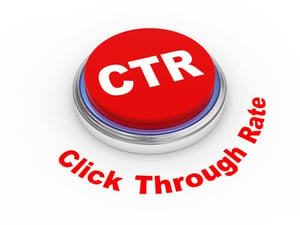When it comes to email marketing, determining customer segments within your database of contacts is second only to actually generating the list of names and email addresses. Think about it this way: would you rather talk to a room of twenty people (with only five actually interested in what you have to say) or take those five interested parties into a smaller, more private room? Of course, you want to speak only to the five people who care rather than wasting time and energy on people you know aren’t interested. In the game of email marketing, the success of your campaigns is directly tied to how certain you can be that the list of people you’re contacting is interested in what you have to say.
So, not sure how to start thinking about segmenting your list of customers? Don’t worry, we’ve compiled a list of 7 ways to segment your list:
1. Demographics
Demographics offer a wide variety of ways to segment lists. For example, it can be as simple as whether your product or service is more appropriate for women or men or as complicated as how location impacts interest in your offerings. Other ways to demographically segment your list include age, ethnicity, education level, occupation, marital status, number of children, income, and many other socioeconomic factors.
2. Internet Preferences
By conducting some basic research on your database through surveys (a little bit of work but very worth it), then you’ll start to realize that subscribers have certain interests and preferences that can help you identify what kinds of offers and information related to your products and services are most likely to engage them. For example, people who are social media savvy are more likely to react to social calls to action in your communication than those who indicate very little social media usage.
3. Differentiate Between Prospects and Clients
Whenever a subscriber becomes a customer, ensure that you move them to a separate list where they’ll receive customer-targeted messages, not ones intended for prospects. It goes without saying, then, that you need to have separate lists for prospects and customers.
4. Open and Click-Through Rates

Anybody who frequently opens your newsletter and clicks on your links and calls to action is clearly showing a high level of engagement. Once you have enough data to be sure, you’ll definitely want to put your engaged subscribers on a separate, high-priority list. You can then send more ambitious and targeted messages to this group who are exhibiting a higher level of interest in your products and services.
5. Product Lines
People often buy products from the same line; iPhone users buy iPhone accessories, Playstation owners buy games, and women with Coach purses buy Coach wallets. If you have a large product line or even just products or services that are closely related, you should segment your subscribers based on the product line they’ve purchased from. This way, you can communicate to subscribers about the product lines they are already engaged with and thus increase your conversion rate.
6. Average Sale Price
People have different tastes and budgets and should be communicated appropriately. A subscriber with a history of purchasing $50 shoes should not receive information about $200 high heels, just like the purchaser of $300 jackets should not receive information on $75 coats. Segment your lists in a way that allows you to give subscribers information that is most relevant to their interests and past purchasing behavior.
7. VIP Customers
Make sure your best customers know and feel like they are, in fact, your best customers. Keep them on a separate list and send them exclusive offers the rest of your database will not receive. Don’t be afraid to send them offers that only make sense because they are such good customers. For example, offer them a great price on an item if they buy it in-store - chances are, you’ll make that money back when they buy four other items after paying you a visit!
Unfortunately, email marketing is often underrated and definitely viewed as an impersonal marketing tactic. But if you do some research and carefully segment your lists, you'll actually be getting extremely targeted and that much more personal with your subscribers!






